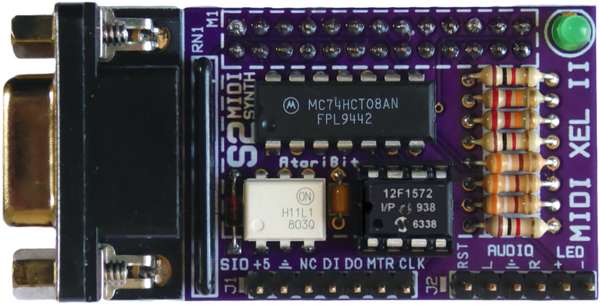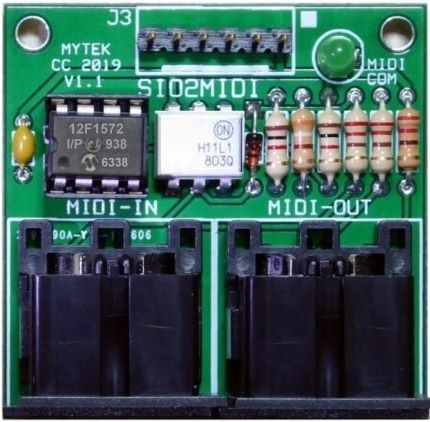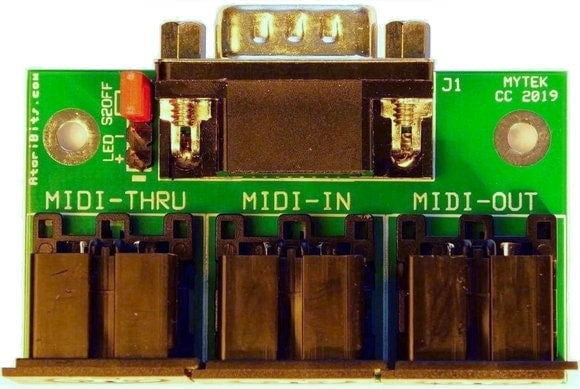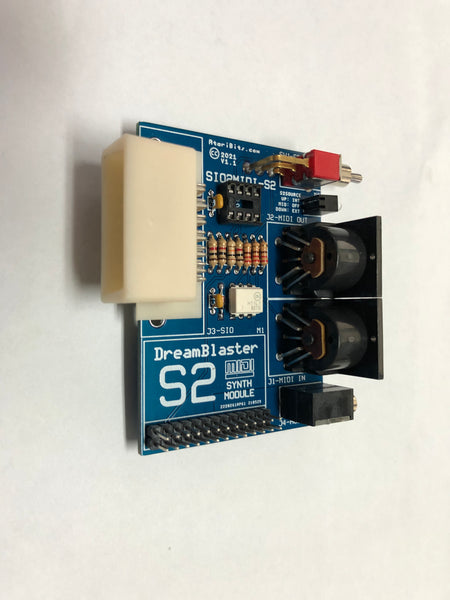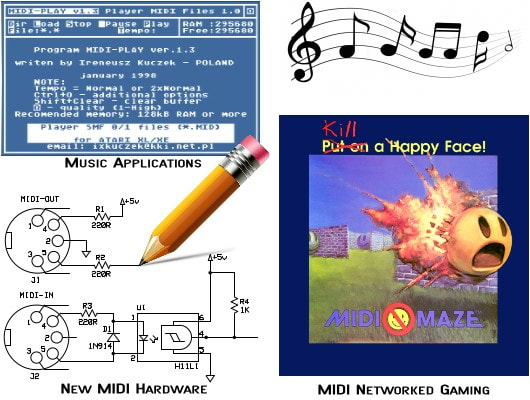MIDI for your Atari 8-bit (400/800/XL/XE/XEL/XLD)
We are proud to offer MIDI Accessories by MyTek.
Quick description
SIO2MIDI: Gives you the ability to attach a MIDI device to your computer. You must create your own SIO cable.
SIO2MIDI-S2: Gives you the ability to attach a MIDI device to your computer. SIO port included (requires standard SIO cable). Can ALSO accept a DreamBlaster S2 which is a self-contained MIDI synth table. EXCELLENT and compact. Will NOT play sound through the computer. But does have a headphone/speaker jack built-in.
MIDI-XEL II: Gives you the ability to attach a DreamBlaster S2 to your 1088XEL (only) which is a self-contained MIDI synth table. EXCELLENT and compact. Will play MIDI through the 1088XEL speakers. Can also be expanded to accept external MIDI devices.
XEL interface: Allows you to connect MIDI devices to your 1088XEL computer. REQUIRES MIDI-XEL II installed. REQUIRES standard DB9 cable (not a null modem cable, but a fully wired DB9. A joystick extension cable works fine)
From his website:
|
Music and MultiPlayer Gaming on your Atari
MIDI on the 8-bits began in early 1983 because of a small company in Los Angeles called Hybrid Arts. They created the first SIO to MIDI bridge solution housed in a molded plastic box with a footprint about the same size as most people's present day Smart Phones. This new device was called the MIDIMATE, and consisted of two circular 5-pin DIN jacks labeled MIDI-IN and MIDI-OUT, as well as two sync jacks for multi-track synchronized tape recording. MIDIMATE enabled the Atari 8-bit computer to be the first to actively support MIDI two years before the release of the Atari ST. Hybrid Arts also produced a series of software applications meant to interact in a creative way with various MIDI instruments via this new interface (MIDITrack, MIDIPatch, DX-Editor). |
|
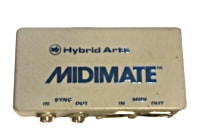 Early SIO to MIDI Interface Early SIO to MIDI Interface
Having now arrived in the 21st century, MIDIMATEs are no longer manufactured, nor does the company Hybrid Arts still exist in the form it once was. But there's still a strong community centered around the Atari 8-bit, with people like AtariAge member ivop creating his own MIDIMATE compatible solution called MIDI Muse. In his project as discussed at AtariAge, ivop took it a step further and added built-in support for a MIDI Synthesizer Wave Table Module called the Dream Blaster S2. And although the project is presently on hold, it has been released on GitHub for those who wish to build one, or take it beyond it's present specification.
I was one of those people that decided to put my own twist on what ivop had created, and incorporated the idea into a new project started in 2018, known as the 1088XLD. But before I could actually do that, there were a lot of things for me to learn in the ways of MIDI. Through a series of experiments, and considerable help from ivop, my understanding of how MIDI works began to take shape and grow. Seeing that the serial communications baud rate for MIDI was a relatively slow 31,250 bits per second. It was decided that the glue logic which controlled the gating of the signals onto the SIO bus, could instead be accomplished as code running inside one of Microchip's 8-pin PIC micro-controller IC chips. The first experiments with this new concept were highly successful, and led to other aspects being incorporated such as generating the external MIDI clock, and then later still a method of playing a little MIDI tune upon first powering-up the system. This was all made possible by choosing to use a PIC MCU as the basis for a MIDI controller. |
The first experiments utilized a 1088XEL as the test bed due to it having an AUX-SIO header, which made it very easy to connect to the SIO port. Luckily the header specification that came out of the early stages of MIDI Muse development, had everything that was required.
A series of boards resulted from these experiments. Some of which were throwaways, and others proved to be far more useful. One of those was the MIDI XEL board that allowed the S2 module to be easily installed in the 1088XEL, bringing MIDI music in addition to the normal Pokey sound. This idea was improved upon by AtariAge member Sleepy's suggestion of adding a DB9 connection to the MIDI DIN interface, which later morphed into the MIDI XEL II board set. Because of an inquiry from AA member Brentarian, a simpler less expensive MIDI interface board was also created. It's design working well with a multi-player game of MIDI-MAZE, |





